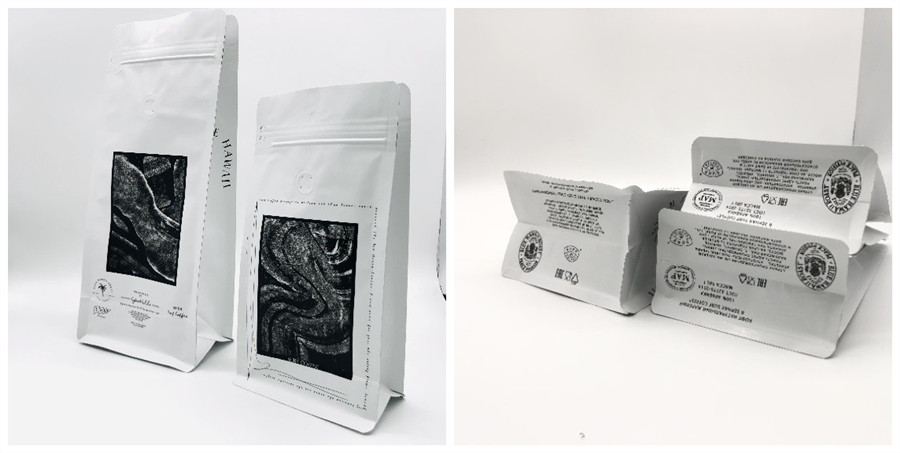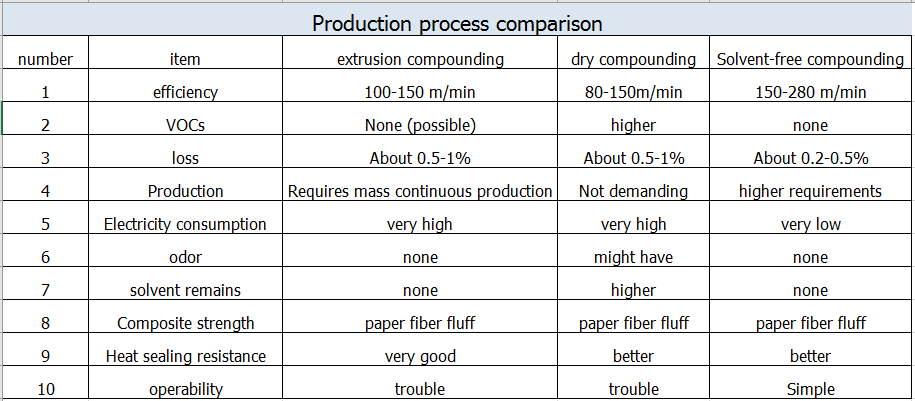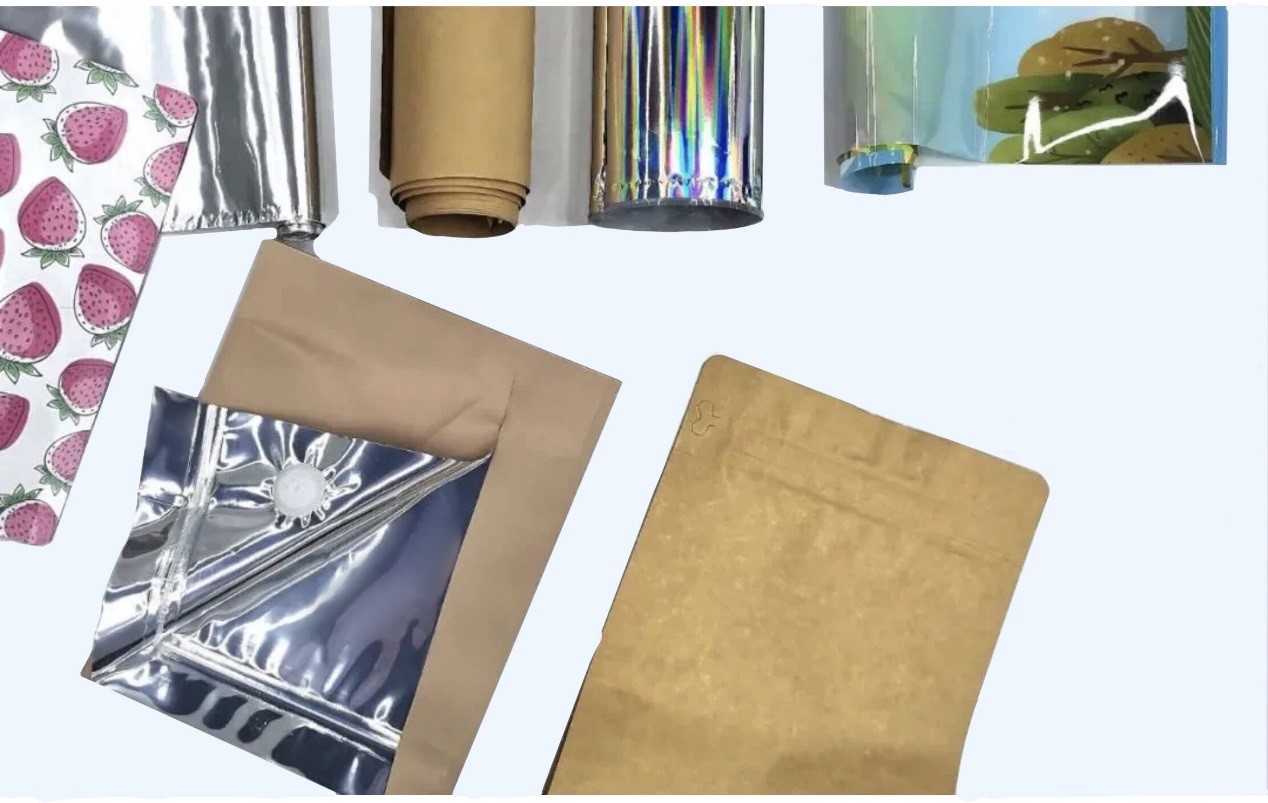As the country becomes more and more strict with environmental protection governance, the end consumers’ pursuit of the perfection, visual impact and green environmental protection of the product packaging of various brands has prompted many brand owners to add the element of paper to the packaging design. Including the editor himself, I also like paper packaging very much, and I often collect some packaging bags of this type. Our company’s finished products are also very amazing, such as a coffee kraft paper zipper bag with an air valve that we just made recently.
The design of paper-plastic composite packaging is novel and unique, which has brought extraordinary performance results to brand owners. However, in the production process,,the composite processes used include dry composite, extrusion composite, solvent-free composite, etc., which also causes some processes to be unstable, such as many waste products, odor, high solvent residues, etc. Problems such as heat sealing and blistering. To improve the quality of paper-plastic composite packaging, it is necessary to start with the process on the basis of in-depth understanding of this type of packaging, in order to achieve twice the result with half the effort.
1. The current situation of paper-plastic composite packaging
In terms of structure, there are various forms of paper-plastic structure products on the market, generally divided into OPP//PAP, PET//PAP, PAP//CPP(PE), PAP//AL, etc. From the classification of paper: each brand chooses different types of paper, the thickness and weight of the paper are different, ranging from 20 to 100g. The production process includes extrusion compounding, dry compounding, solvent-free compounding, etc.
Through the above comparison, each process has advantages and disadvantages. In simple terms, solvent-free composites have advantages in comprehensive performance, such as efficiency, loss, etc. If the order quantity is relatively small and the order is complicated, we still recommend dry compounding (pay attention to the selection of paper, glue, etc.).
2. Choice of materials
There are many types of paper materials that can be used for paper-plastic composite materials, including coated paper, white kraft paper, yellow kraft paper, double-adhesive paper, writing paper, light-coated paper, pearl paper, soft tissue paper, base paper, etc., and according to packaging design requirements , can be made into different composite material structures, such as OPP/paper, PET/paper, CPP//paper, PE//paper, AL//paper, etc.
There are about dozens of classifications according to different uses, processes, etc., commonly used in the field of flexible packaging are kraft paper, white kraft paper, soft cotton paper, base paper, pearl paper, etc., the quantitative range from 25gsm to 80gsm. Due to the wide variety of paper and different uses, the following points should be paid attention to when using different paper:
① – Generally speaking, the smooth side of the paper is easier to bond with the film, while the rough side and the film are difficult to bond. This is mainly due to the pits and pits on the rough side. Adhesive fills the holes.
②Pay attention to the paper density. The fibers of some papers are very loose. Although the paper and the film are well bonded when they are laminated, they are prone to delamination after heat sealing.
③ The moisture content of the paper also has a certain influence on the bonding effect. According to personal experience, the moisture content of paper should generally not exceed 0.4%. It is a good idea to leave the paper in the oven for 1 to 2 days before production
④ Pay attention to the cleanliness of the paper surface.
3. Structural design
When designing the structure of the paper-plastic packaging container, it is necessary to understand the properties of the packaging and select the appropriate material and structure.
In terms of bag structure, it is mostly used for solid commodity packaging, and the shape is soft. Considering the packaging function and product display requirements, the structure can be divided into three types: no window type, strip window type and special-shaped window.
The windowless bag is the most common bag-type structure. The main body is paper material (such as kraft paper), and the inner and outer layers are usually protected by plastic films such as PE (polyethylene) and PP (polypropylene), which can effectively block moisture and oxygen to prevent content The material deteriorates, and the molding process is basically the same as that of plastic flexible packaging. First, the paper is combined with plastic film and then heat-sealed to make bags;
The strip window bag and the special-shaped window are of the window structure bag type, and the paper is used to make partial air holes, so that the packaging can present various styles. In addition to maintaining the transparency of the packaging bag, it can also have the texture of paper. The window bag forming method is to combine a narrow-width plastic film and two sheets of paper with another wide-width plastic film. There are two ways to make special-shaped windows. One is to open the window in the paper material in advance to make different shapes, and then compound the material. The material of the composite layer can also be changed and designed in a large area to improve the flexibility of the production process.
4. Production process
The dry compounding process is relatively mature. Enterprises choose solvent-based two-component glue, and also choose single-component glue and water-based glue. Here we suggest that no matter what glue is used, the following points should be paid attention to:
a. The choice of paper is very important;
b. Water content control of paper;
c, paper glossy and matte selection;
d. Pay attention to the cleanliness of the paper;
e, the control of the amount of glue;
f. Speed control to prevent solvent residue from being too high.
Post time: Jun-09-2022










